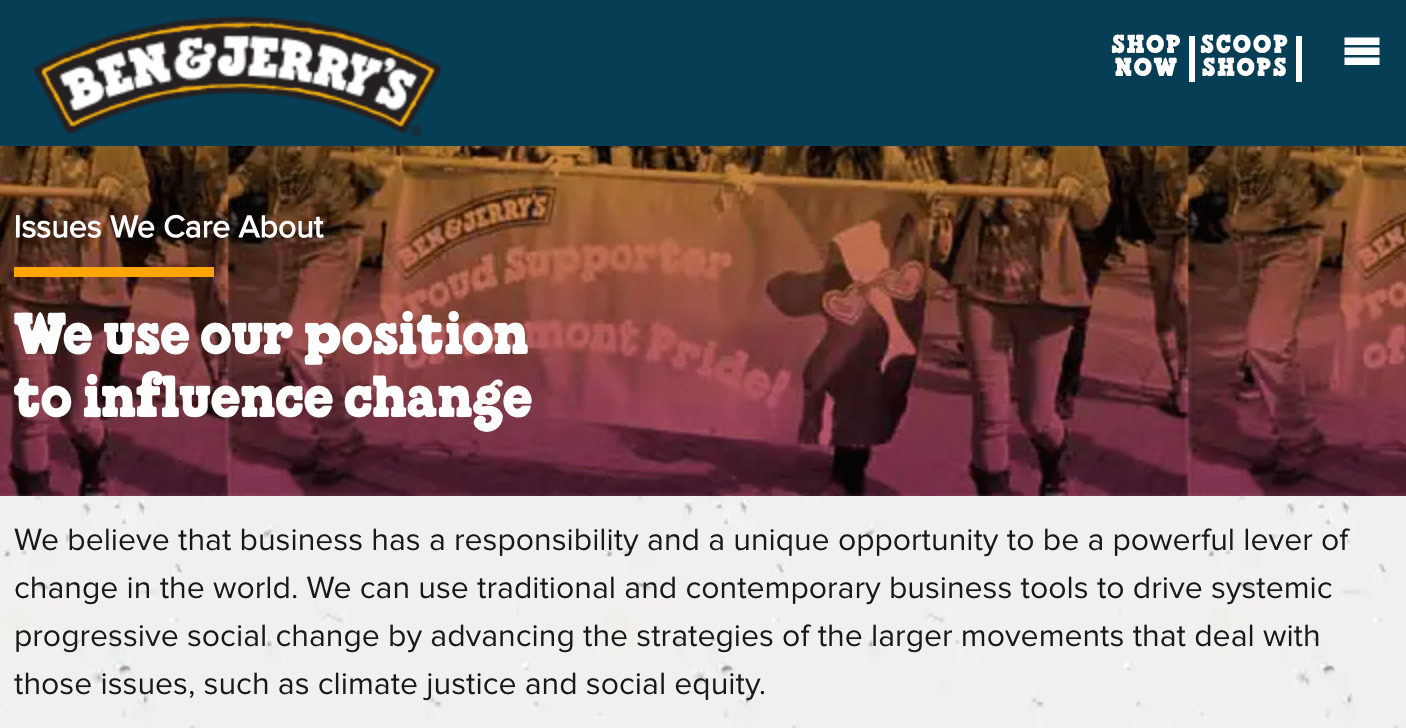What is cultural branding? This article defines the principles of cultural branding while giving examples of iconic brands that have achieved it.
Few businesses truly succeed in creating iconic brands, despite the fact that many strive to create names that will one day become ingrained in popular culture. The term cultural branding isn’t new but isn’t as famous as other terms like “brand loyalty”, “brand story”, and “brand equity.”
Every marketer dreams of creating a brand that’s distinct, ever-lasting, and culturally relevant. Cultural branding is the pinnacle of great advertising and marketing.
Some companies have achieved that by tapping into genuine emotions and having great timing. But as straightforward as that sounds, that pinnacle has only been achieved by quite a few brands such as Starbucks, Budweiser, and Coca-Cola.
It’s not just about attracting consumers; it’s all about fostering a sense of belongingness among every stakeholder.
With more and more brands popping up left and right, you might be wondering what the principles of cultural branding are and how your business can achieve it.
This article will define cultural branding and explain the key principles of the term.
Hire a branding agency to support your company's efforts.
What is Cultural Branding?
Cultural branding is often associated with consumer brands that reflect a culturally relevant lifestyle to its target brand audience. It’s a form of storytelling that builds profound connections with consumers and establishes your brand’s purpose.
Essentially, it’s about making your brand synonymous with a lifestyle — showing consumers what it stands for and your core values, not just great products.
Oftentimes, cultural branding is linked to business-to-consumer (B2C) brands. However, it can also be applied to all kinds of businesses in various industries or markets.
Douglas B. Holt, a Bristol-based professor and the founder of the Cultural Strategy Group, wrote the book “How Brands Become Icons: The Principles of Cultural Branding”, providing in-depth insights into the power of cultural branding.
The book talks about how iconic brands craft their “unique identity” myths that help them rise to the apex of branding.
What are Identity Myths (and Why Do Brands Strive to Create Them)?
According to Holt, identity myths are integral to the making of an icon. They are simple stories of fiction that are aimed at tackling cultural anxieties.
As brands consistently target their myth markets, their myths are more likely to become tangible to consumers. Through identity myths, brands may resonantly guide the public and leave a lasting impression on society.
This helps the brand become a symbol, embodying that myth, and ultimately, these brands provide society's members' identification by forging their own identities. Just look at the brands that have successfully mastered cultural branding, they become symbols — freedom and Harley-Davidson, elegance and Dior, and extreme and Red Bull.
People naturally connect to stories. When companies push sales pitches, consumers become skeptical.
Customers might express their own individual sense of self through their affiliation or patronage. A brand must develop an identity myth that is primarily motivated by the utmost compassion for the emotional demands of the consumers if it is to become iconic.
Holt’s Principles of Cultural Branding
Holt himself warns that iconic brands didn’t reach their status overnight and through conventional branding strategies. Brand managers who strive to attain such prestige must have meaningful views on conventional marketing.
Here are the principles of cultural branding that every brand must follow:
- Foster a community among consumers
- Recognize a disruption in society
- Create compelling experiences
- Offer great products and services
- Establish consistent brand infrastructure
Foster a Sense of Community Among Consumers
Brands that become cultural icons give more than simply goods or services; they also foster a sense of belonging and connection. These brands provide customers access to an exclusive group of like-minded people. This may be a prime result of participating in various cultural movements.
An example of this is Red Bull and how it forged its titanic status as a giant in the sports drink industry.
Aside from its dominating presence in Formula 1, an international open-wheel single-seater racing competition, the company is active in the sports industry, especially in extreme sports and activities.

The company produces out-of-this-world ads but also remains on the ground even on lesser-known sports. It can be considered a success since the drink itself has become attached to energy, vibrance, and edge.
Recognize a Disruption in Society
The most successful brands were built on a commitment to innovate and disrupt. You must not only disrupt the market but do it in a way that your customers see as "good" if you want cultural branding to be successful.
This doesn’t necessarily mean that it needs to be a massive social issue, but something that’s genuinely close to your customers’ hearts. Another point to remember is that you’re not challenging the political authority; you’re using your company as leverage to spread positivity.
When Ben & Jerry's was first established in the late 1970s, the ice cream industry was flooded with competing brands in a very difficult market. The company didn’t go from one single ice cream parlor to becoming an international force right away but they knew they had to play for the long run.

By establishing itself as a contrast to then-United States President Ronald Reagan's period, when sharp divisions between conservatives and liberals were forming, the firm prospered in the 1980s.
For Ben & Jerry's to have an influence, it had to be more than just an ice cream shop. This required reaching out to the peace, love, and compassion values that customers in the 1980s actually wanted.
Create an Experience with the Consumer
Companies that provide unforgettable experiences for their customers are iconic. The best example of this is Apple and how they cleverly crafted the entire customer journey.
From their annual announcements of products to purchasing from their physical stores, and using the product themselves, the technology giant understands how to deliver unique experiences.
When entering an Apple store to buy one of the latest gadgets, customers are greeted with a distinct interior. By putting the needs and wants of the consumer first, Apple entirely reimagined how shops operate, developing a disruptive retail model that appealed to people all over the world.
They created a customer experience, not just a brick-and-mortar store. That memorability is what customers expect and go back to when they need an upgrade in the future or even when they buy another product.
Offer Strong Products and Services
Certainly, a great product or service is necessary for any brand to have cultural lasting power. The product must be able to stand on its own merits, even if the brand experience is equally or perhaps even more appealing.
Cultural brands don’t settle for their products — they keep looking for ways to improve and innovate.
Nike, for example, is legendary for its check. Their footwear is known by millions across the world for its durability, style, and comfort.

Even if it has a ton of competitors, Nike is an undeniable icon. The titan not only checks the aforementioned principles, but its products also deserve praise. They are able to keep thriving because of good products accompanied by compelling storytelling.
Establish Consistent Brand Infrastructure
Consistency is fundamental. The cardinal rule of branding and marketing is keeping everything constant. You can't just adjust and develop a cultural branding experience when marketing trends shift. You must be prepared to stick to your own values over the long run.
The finest cultural brands have an image that goes far beyond the product to encompass the experience, the story, the community, and the structure.
For instance, look at IKEA, the Swedish-Dutch retail empire, and its consistency across its 466 stores globally. The international home furnishing retailer isn’t just known for its aesthetics — its store layouts, product names, and the community it builds around IKEA Family are key contributors to its market status.
The company delivers a distinctive brand experience compared to its rivals in the space. Throughout the years, IKEA stood by its simple origins and its products reflect that. You can’t buy advertising that’s this impactful.
Time tests consistency. It’s not just through luck or quick formulas, it’s knowing the principles and integrating them into your business through the years.
Brand Activism vs. Cultural Branding
Brand activism is an emerging trend in marketing and advertising. Companies that do brand activism use their resources and potion to promote a social cause or issue.
Through donations, campaigns, and advertising, brand activism mainly aims to raise awareness. For those who aren’t well-versed in the market, brand activism and cultural branding may seem similar. However, that’s far from the truth.
Cultural branding is all about encouraging and celebrating genuine connections, whereas brand activism may be about any cause or social concern. While the two are entirely different, companies can do both brand activism and cultural branding.
Additional Reading: ‘Inclusive Marketing: 4 Strategies from Brands Doing it Right’
Cultural Branding Thrives on Connection
The connections between brands and their consumers have been widely welcomed and fostered by the brands that have shaped our cultural environment.
When it comes to learning the concept of cultural branding for your company, there is no simple methodology. Instead, you should consider these principles and define the purpose of your company. Take your time — study case studies and insightful pieces like Harvard business reviews, don’t hurry to create an iconic brand.
Once you have those two together, you can figure out how you can forge better relationships with your target audience. It sounds uncomplicated but not many businesses can execute it fully.
Additional Reading: